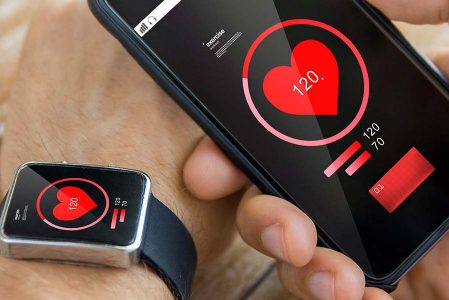Not only is technology all around us, now it is a part of us. Wearable technology - devices worn by consumers that are designed to synch with mobile devices and include tracking information related to health and fitness - promises to revolutionise the way we do business.
But do not rush headlong into the new wearable tech craze without serious consideration. An over-reliance on mobile, digital technology can expose you and your organisation to security breaches and other cyber-attacks. According to the Cyber-security breaches survey 2019, 32 per cent of businesses experienced a cyber-breach in the past 12 months.
Now with the advent of wearable technology such as smart watches, smart rings and fitness trackers, your vulnerability - and, by extension, your company’s vulnerability - to breaches in cyber-security will increase dramatically.
This is because wearable technology offers users an unobtrusive, fully functional alternative to similar devices such as tablets and smartphones. Wearable technology generally has communication capabilities, stores data on the wearer and provides the wearer with access to real-time information. However, if users access sensitive company data using wearable technology, that technology can expose your organisation to the risk of a data breach.
Despite the risk of increased exposure to cyber-attacks, wearable technology can provide your company with operational benefits. But the amount of risk that you invite upon yourself, as well as your company, depends on how you manage the risks associated with wearable technology.
The Benefits of Wearable Tech
Any article of clothing or accessory that has computer or advanced electronic technologies integrated into it is considered to be wearable technology. This design allows the device to be highly mobile without requiring users to compromise comfort or functionality. The following are some of the main benefits your organisation could experience if it incorporated wearable technology in the workplace:
- Employees are, on average, 8.5 per cent more productive when using wearable technology and 3.5 per cent more satisfied in the quality of their work, according to a University of London study.
- Fitness trackers promote healthier lifestyles among your employees through collective goals (such as holding a contest to reward the department with the highest number of steps) that boost team performance and build a sense of community.
- Companies with a large number of employees spread out at their locations and performing manual tasks (such as unloading products from shelves or pallets, restocking shelves, sorting products, cleaning specified areas, etc.) are able to track their employees’ whereabouts and assign them new tasks using wearable technology.
- Wearable technology increases accountability and productivity of employees through recorded video, periodic photographs and location tracking. Wearable technology can even collect employees’ performance data in real time, giving you an on-demand snapshot of their productivity.
While the potential day-to-day benefits of wearable technology offer your company profitable incentives, do not be blinded by the novelty - wearable technology still comes with plenty of risks.
The Risks of Wearable Tech
The convenience and functionality of wearable technology provides additional unwanted risks to both yourself and your company. The following are some of the main risks associated with wearable technology:
- Unauthorised documentation and recording of sensitive data, confidential information and personal information associated with your products, employees and company
- Possible health risks associated with prolonged exposure to radio-frequency energy
- Lack of regulations concerning how an individual can revoke personal information should a wearable device be lost or stolen
- Health information that is recorded by a wearable device is not protected by the Data Protection Act 1998
- Most boilerplate personal insurance cover does not automatically include wearable technology nor the personal information stored on the device
- Breaches in cyber-security leading to the loss or theft of personal and/or confidential information from cyber-attacks and data breaches
While this is not an exhaustive list of the potential risks to your company and employees due to the introduction of wearable technology, it does provide context and guidance for when you develop your risk management plan.
Managing the Risks of Wearable Tech
Inevitably, wearable technology may become not only a common accessory that we choose to wear, but an accessory we must wear. Therefore, you and your company should take proactive steps to safeguard both corporate and personal information. Rely on the following strategies to help manage the risks of wearable technology in your organisation:
- If you access sensitive information, send emails or conduct any sort of business, be sure to only use a secure, password-protected wireless connection.
- Use different, unique and complex passwords for all your accounts.
- Meet with your IT department to discuss the potential risks of wearable technology and other smart devices and what solutions your company could implement to deter those risks from happening.
- For any business meeting, turn off your wearable technology and other smart devices to prevent any sensitive information from being unknowingly recorded.
- Outline specific use guidelines for wearable technology in your company’s Bring Your Own Device (BYOD) Policy.
Wearing Your Risk on Your Sleeve
The benefits of wearable technology are numerous - but so are the risks. Carefully consider whether wearable technology is right for your organisation. With a robust risk management programme and BYOD policy, your organisation can control its wearable technology and reap the benefits for years to come.
For more information on preparing your organisation for future success, contact Pound Gates today.


